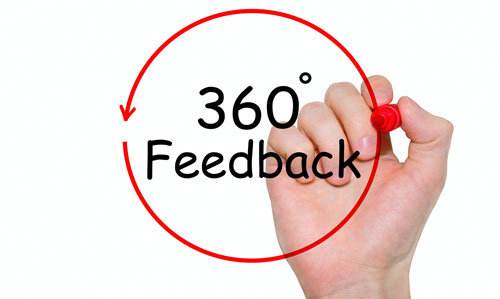Even people with rhino hide for skin get nervous opening their 360 degree feedback report. Everyone you work with has rated you on your behaviour, skills and experience. Everyone. There’s no place to run to and no place to hide.

Your boss tells you what they think of you. Your team tells you what they think of you. Your colleagues and customers tell you exactly what they think of you. And then you have to figure out what you think of yourself. Sheesh – feedback overload!
What’s hot and what’s not
We all know feedback can be useful. At it’s simplest, you do more of what people like, and do less of what they don’t like.
360 degree reports usually give a detailed numerical analysis your strengths and development opportunities. But the analysis is only as good as the information going in at the front end.
Give as good as you get
Avoid these common mistakes in your feedback and be ready to spot it in the feedback you receive.
The 4 most common 360 degree feedback mistakes
Being Nice
If you don’t want to offend, then don’t give bad ratings! But you’ll continue to get reports late, be missed off distribution lists or talked over in meetings. Honest feedback is the best gift you can give someone. I bet you would rather you were told than continue to do something badly?
Bland Central
You may be asked to give feedback on someone you don’t know well or deal with infrequently. Avoid giving bland, middle of the road ratings and consider skipping the questions you can’t answer or comment on. Bland feedback is the equivalent of a matching socks and handkerchief gift set.
Shining Halo
It’s natural for work mates to become personal friend and this can put a rosy glow over feedback. Focus on each question individually and think about specific work related examples to justify ratings.
Straight for the Jugular
When you feel the need to draw blood with spiky harsh feedback, think again. Those surveys are not always completely anonymous – it could come back to bite you. Limit yourself to harsh feedback on the one or two behaviours that need to change. And why did you have to wait until the survey to get the knife out? How about tackling the problem behaviour when it happens?
You can enjoy it!
Okay, so maybe I’m stretching credibility by suggesting 360 degree feedback can be fun. But it can be useful. Make opening your next report a less trepidatious experience by taking heed of these common mistakes and avoiding them.
And it will be better, I promise!
About the Author
Lyndsay Swinton is owner, Management for the Rest of Us




